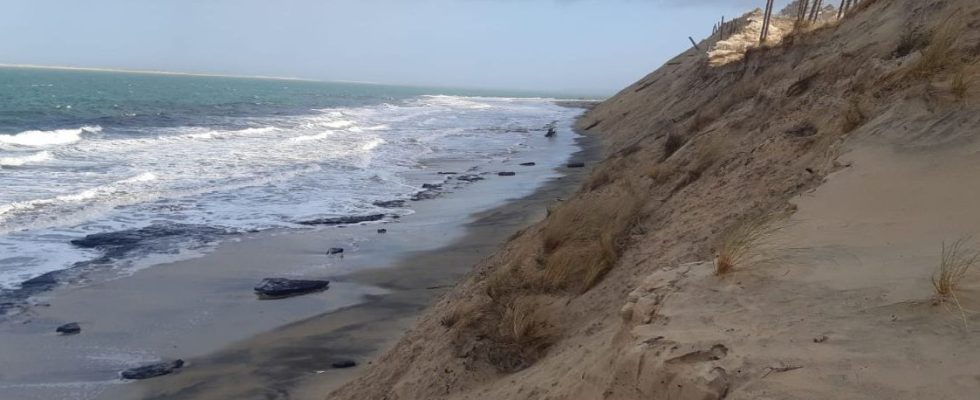A “collapse” of the coast, which transformed in forty-eight hours a gently sloping dune into a real cliff. On February 24, the prefect of the Gironde issued an order closing the Petit Nice beach, in La Teste-de-Buch in the Arcachon basin, after a decline in the coastline of twelve meters in forty-eight hours.
The closure order “continues to run until further notice”, indicated Tuesday to 20 minutes the sub-prefect of Arcachon, Ronan Léaustic. The ONF (National Forestry Office), which manages this part of the dune because of the proximity of the forest, “was already worried for a few days because there were phenomena which were eating away at the coast, remembers Ronan Léaustic, then it accelerated suddenly, forcing us to take this order because the situation had become extremely dangerous. »
Only the Petit Nice “plan-beach” remains open
Consequence: it is all the beaches of La Teste-de-Buch which are now prohibited, since the other two (La Salie and La Lagune) had remained closed since the fire in July. Only the “plan-beach” (area set back from the beach where there are restaurants and picnic tables) of Petit Nice remains open.
“There is a real risk of burial for people who go to the beach, warns Caroline Fourcade, head of the territorial unit of the ONF. The phenomenon is likely to be significant until the end of April, she adds, since we will continue to have high tidal coefficients, and windy marine weather conditions with a swell often greater than five meters, which will maintain this erosion front. »
A decline of a hundred meters between 2010 and 2014
Can this phenomenon be qualified as exceptional? Yes, some say, because twelve meters in forty-eight hours is still quite remarkable, and no, according to others, because there are regular events of this type on this part of the coast of the Arcachon basin.
“Last year, the Lagune sector retreated by 48 meters over the whole of winter, and 38 meters the previous year, and we have already experienced a decline of 36 meters in one night, recalls Cédric Bouchet , ONF territorial forestry technician. In this sector of the Arcachon basin, we experience cumulative declines of more than 30 meters every year, when the annual average on a sandy coast is two to three meters per year. But it’s very localized, and it changes sectors regularly. Le Petit Nice had retreated a hundred meters between 2010 and 2014, after which it was the Lagune sector…”
An estuary phenomenon
Why is this part of the Arcachon basin so exposed to erosion phenomena each winter? “It’s due to the passes of the basin, and the positioning of the sandbanks which are constantly moving, explains Cédric Bouchet. There is an estuary phenomenon that generates side currents and sandbanks [comme le banc d’Arguin] which, depending on their position, create constraints and direct the marine flows towards the coast, which accentuates the phenomenon of erosion, something that there is not on a classic coast. As soon as there is an estuary phenomenon, there is a greater erosion phenomenon. »
However, it is difficult to say whether the phenomenon is accelerating due to climate change. “The coast has always been mobile, analyzes the ONF technician, but it will be necessary to monitor the possible consequences of global warming on these sectors. A rise in water levels would have no impact, however if there is a more frequent recurrence of storms, the environments would not be suitable for absorbing as much energy. We saw it during the winter of 2013-2014, when there was a succession of more than ten storms, causing continuous erosion along the entire coast. »
“A pine would go down the drain like the rest”
In the meantime, the authorities are adapting, taking advantage of a respite in such and such a sector to re-silt, by undertaking work to reinforce the dune. By dismantling certain structures, which deliberately remain light on this part of the basin. The Petit Nice aid station has already been moved twice since 2010.
“We can’t really counter a phenomenon of marine erosion,” explains Cédric Bouchet. I sometimes hear that pine trees should be planted to fix the dune, but this technique works against wind erosion, not sea erosion. A pine would go down the drain like the rest. »
The ONF will also “take advantage” of the great fires of last summer, to reshape the landscape. “The forest environments have been completely burned, this is an opportunity to let the dune recover, give it more space on 150 to 180 meters from the coastline, and avoid having forest and directly a cliff” , continues the technician.

